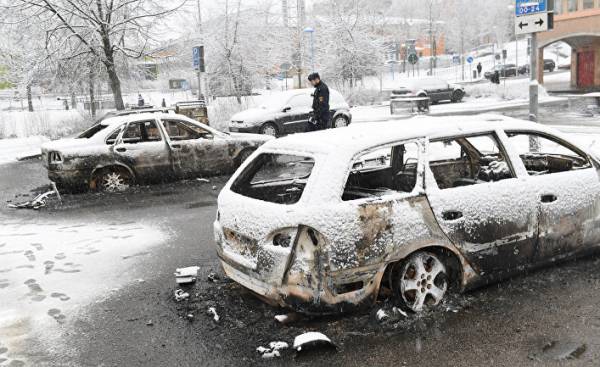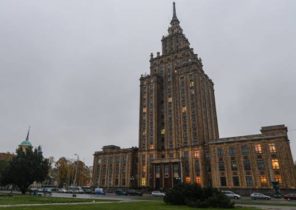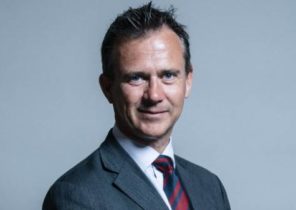
Stones thrown at police. Cars set on fire. Looted shops. Can what happened in one of the biggest ghetto in Scandinavia, Rinkeby happen in Norway?
I just arrived from a business trip to Stockholm, more precisely in the district Rinkeby. Had to write a report. My conclusion is simple: in Norway there are places where would happen like what is happening in our neighboring country.
• In the Norwegian cities have areas where 90% of residents were immigrants or came from immigrant families.
• In the Norwegian cities have areas where one in five young people would not have work or education.
• In the Norwegian cities also, there are areas where thousands of those with a weak potential immigrants would be spread out in a rented apartment.
Confidence in the authorities small
Rinkeby — itself an example of the threat segregation. It is an area with huge social and economic problems. The same can be said about the area Rosengard (Rosengård) in Malmo and some other places in Sweden. According to Swedish police, they gave a description of “vulnerable areas” in more than 50 areas. What unites them is the fact that it is urban areas, which are characterized by social instability and high crime rates.
As a result, the authorities and the police do not trust too many. People feel that they are outside society. In these areas, the influence of criminal gangs, they do everything to show that they, not the state, control all.
Unrest in Rinkeby started because of the arrest associated with a drug-distribution ring. It was the response of ordinary citizens, and youth, a member of the gang.
Immigrants in Sweden
In the Norwegian capital such a ghetto there. Why? An important factor is the number of immigrants and refugees. Sweden —a country in which migration policy was and remains the most liberal in Scandinavia.
Another dimension is the composition of the immigrants. In Norway the first so-called guest workers arrived in the 1970-ies from Pakistan, Turkey, India and Morocco. In Sweden, the immigration gained momentum in the 1980-ies, when the country arrived immigrants from Iran, Lebanon and Chile.
In 1990-e years — the new boom, immigrants from the former Yugoslavia. And in 2000 years — from Iraq, Somalia, Afghanistan, Eritrea and Syria. Does it matter that in Norway and Sweden are totally different “types” of immigrants? Possible. In any case, in our Kingdom such that Sweden is now experiencing, is not happening.
The responsibility of politicians
According to the municipality of Oslo, in Oslo there are more than 200 thousands of persons who are not ethnic Norwegian. This means that more than 30% of the population are either immigrants or born in Norway to parents of immigrants.
It is distributed throughout the city. In areas Stovner (Stovner), Alna (Alna) and szendrő Nordstrand (Søndre Nordstrand) more than half of the population — citizens of immigrant origin. Least of all immigrants live in areas of Vestre Aker (Vestre Aker), Aker Nordre (Nordre Aker) and Nordstrand (Nordstrand). There number of immigrants amounts to 16-18%.
We must pay tribute to Norwegian politicians: they carried out a housing policy that tries to prevent the emergence of ghettos. If they gave a clear signal to the construction of thousands of rental apartments in concentrated areas, the situation would resemble the one that we see now in Sweden.
In Norway, the majority of residents are aiming to buy their own apartments. But it needs work. But if you have a job, you have a sense of belonging. You begin to feel part of a country with which we live. Many in Rinkeby such feelings do not.
Preventive work
The third factor that distinguishes Stockholm from Oslo, is the police. In our capital there are no areas which would not go to the police. In Oslo there is the so-called “no-go-zones”.
Police patrols go on Holmlia (Holmlia), the police station is in Stovner, police and Furuset (Furuset). Police everywhere in the city, both day and night.
There are several reasons why the arrests carried out by the Norwegian police, does not lead to riots and burning cars. Police many years, together with the municipality pays great attention to preventive work.
It sounds trite, but really the value of such work cannot be overestimated. A police source said to me once: “We know our young people. We know who they are.”
Police are in schools, leisure clubs, they do not take the time to ensure that local young people began to treat them with trust. Such long-term work jointly with local authorities is producing results. And provides respect.
Iron hand
And respect is very necessary when dialogue does not work. Oslo police for several years did a lot to combat organized crime. Because we cannot say that in the capital there are no people living at the expense of organized crime
Yes, they are, there are drug dealers and biker gangs and other gangs. But they dare not attack the police, unlike what we observed for quite a long time in Sweden. We have the criminal environment, such bows as “Killers”, “Youngs Guns”, “A – og B-gjengen”, and now a very active group of “Young Blood”.
All of them have a taste of the policeman’s whip. The fact that no one in Sweden has not yet arrested for participating in riots with violence when they were attacked even one AP photographer, shows the impotence of the forces of law and order in the country.
Here in Oslo the cornerstones for the police are in dialogue, and zero tolerance. The same can be said about the police security Service, PST. While the Swedish fighters against terror have problems with penetration in the “closed environment”, Norwegian PST holds hard line against the Islamists through a deliberate and systematic investigations. Now from the bandits with beards actually can not hear any sound.
What the Swedish press?
The fourth factor that distinguishes the situation in Norway and Sweden, press.
For many years I have been writing about different crimes in Sweden. I have to be honest: whenever I saw the Swedish media coverage of serious accidents associated with immigrants, I have always wondered. Or better to say: “do not illuminate” or “light enough”, in the case where the occurrence associated with immigrants.
I remember that after a double murder at IKEA in västerås (Vesterås) in 2015, we wanted as soon as possible to get into a shelter for refugees, where it was officially registered as a criminal. To talk with the people who knew him.
Work this way crime reporters. Say, get a thorough view of the offender, the victim and the motives. I was speechless when Swedish colleagues said they are not going to go to a shelter for refugees. Because I was not sure that they should go there.
It was funny when team TV-2 was the first that gave direct material from the orphanage to release on the news channel. The Swedes did the same later. It happened in Norway, a double murder, this would could not be.
Multiethnic problems
Such an absurdity was in Rinkeby recently. In the Central square there were two teams of reporters from TV-2. One of NRK and one from Danish TV channel DR. The Swedes covered the riots, when they were in the middle, but then paid them little attention. With a few minor exceptions.
If criminal youths threw stones at the police in Norway and set on fire would be a lot of cars, the Norwegian crime reporters would try ASAP to get on her as much information as possible. The reasons for the rampant crime in the city. About the responsibility of politicians and the reaction of the local key figures in an appropriate environment, etc.
Such coverage may have led to critical debate and a healthy interest. The Swedes, we see little such coverage. It seems that neither politicians nor the press doesn’t want to talk about that situation in more than 50 “vulnerable areas” have reached a boiling point.
They want to tell about what’s good. It is also important. Because mainly of immigrants in Sweden all right. Most of those who arrived in the country or was born in it, are well integrated into society, they managed to create himself a future. But the minority living in the ghetto, the situation is just hell. And she is unlikely to change for the better, if you ignore this.
The situation in Norway differs from the situation in Sweden, because the society has not turned its back to multi-ethnic issues. In any case — yet.







